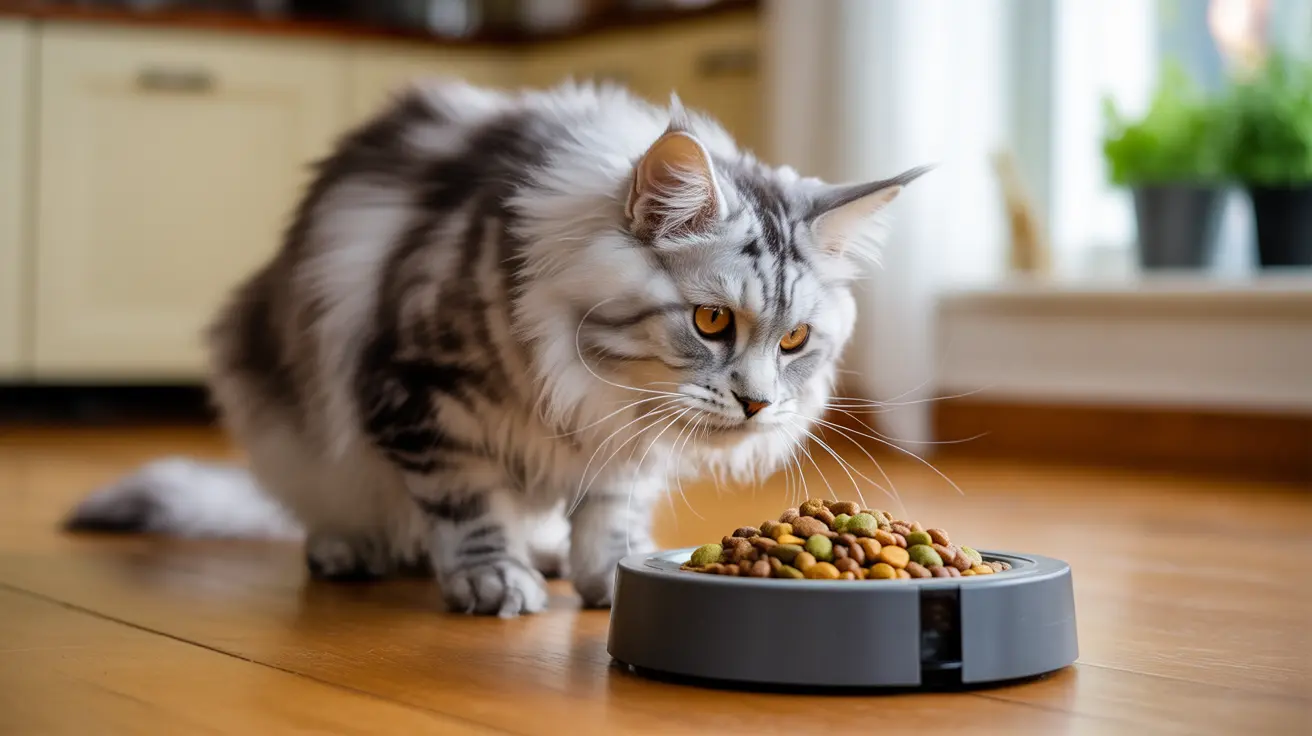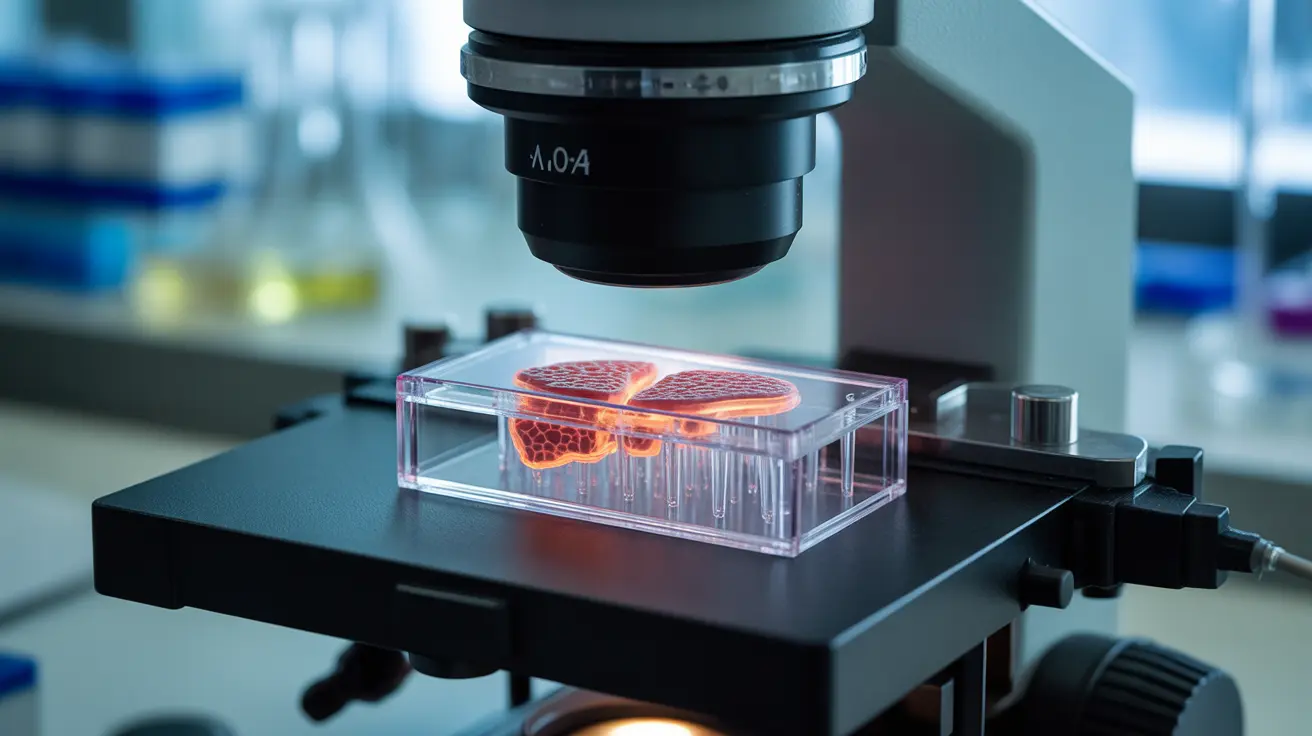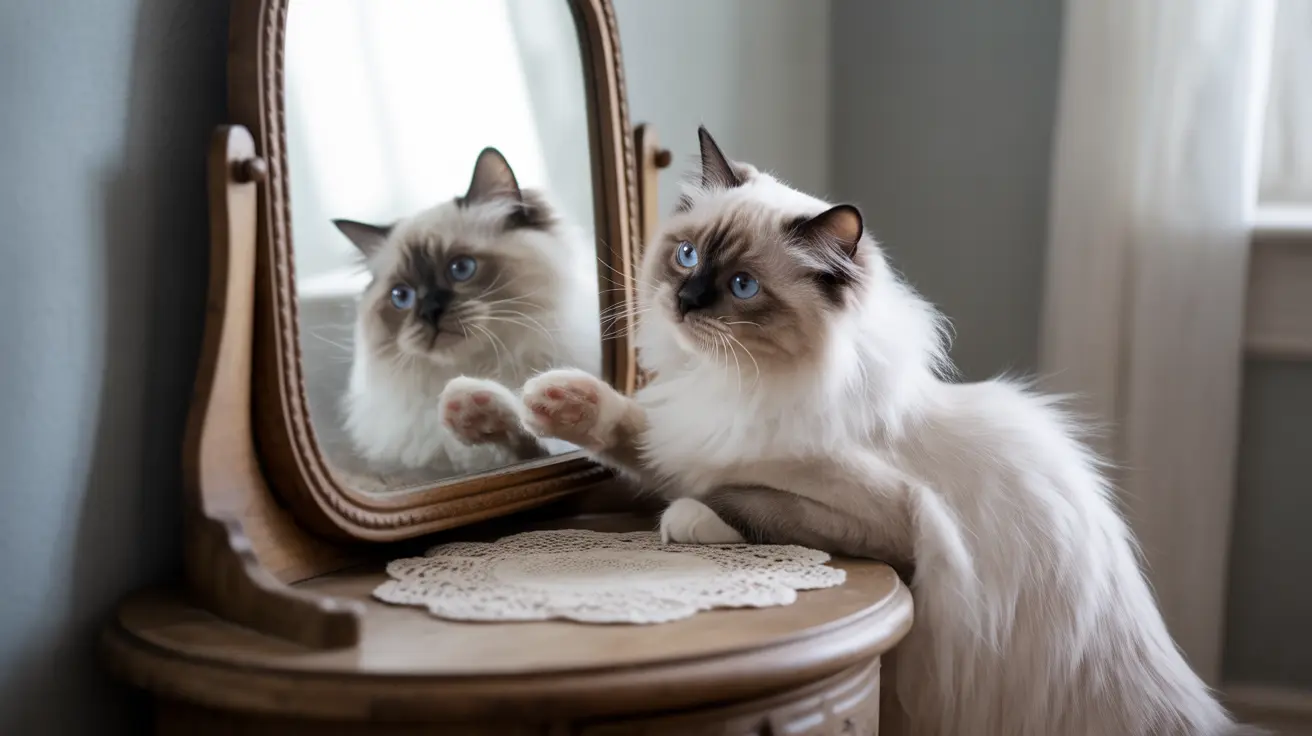The Complete Automatic Cat Feeders Practical Guide: Smart Solutions for Natural Feline Feeding
Modern cat ownership comes with unique challenges, especially when balancing busy schedules with providing optimal nutrition for our feline companions. Automatic cat feeders have emerged as a revolutionary solution that bridges the gap between convenience and proper pet care, offering a practical approach to maintaining your cat's natural feeding patterns while accommodating your lifestyle demands.
Understanding how to effectively use automatic feeders requires more than simply purchasing a device and filling it with food. This comprehensive guide explores the science behind feline eating behaviors, the technology available in today's market, and the strategic implementation of automated feeding systems that support both your cat's health and your peace of mind.
Whether you're managing a multi-cat household, dealing with special dietary requirements, or simply seeking more flexibility in your daily routine, automatic cat feeders can transform your approach to pet nutrition while preserving the essential bond between you and your feline friend.
Understanding Your Cat's Natural Feeding Behavior
Cats are naturally inclined to eat 10 to 20 small meals throughout the day, a behavior that stems from their wild hunting instincts. Unlike dogs, cats don't follow a strict daily feeding rhythm, preferring to consume small portions whenever the opportunity arises. This grazing behavior reflects their ancestral pattern of catching multiple small prey animals rather than consuming large meals at set intervals.
In the wild, cats spend significant portions of their day hunting and eating, with each successful hunt yielding a small meal equivalent to a mouse or small bird. This natural feeding pattern explains why many domestic cats thrive on frequent, smaller meals rather than one or two large daily portions. Understanding this instinctive behavior is crucial when designing an automatic feeding schedule that supports your cat's biological needs.
Indoor cats, however, face unique challenges that can disrupt these natural patterns. Without the physical and mental stimulation of hunting, many indoor cats develop boredom eating behaviors, leading to overconsumption and obesity. Continuous ad-libitum feeding, while meeting cats' preference for constant food availability, can exacerbate these issues by removing the natural portion control that hunting provides.
Types of Automatic Cat Feeders and Their Features
The automatic cat feeder market offers diverse solutions tailored to different household needs and cat behaviors. Timer-based feeders represent the most basic option, dispensing pre-measured portions at scheduled intervals throughout the day. These feeders excel at creating consistent meal timing, which can help regulate your cat's metabolism and prevent overeating while maintaining predictable feeding routines.
Smart app-controlled feeders bring advanced functionality to automated feeding, allowing remote management through smartphone applications. These devices often include features like portion size adjustment, feeding schedule customization, and real-time notifications when meals are dispensed. Some models, such as the PETLIBRO Automatic Cat Feeder with pet camera, enable owners to monitor and interact with their cats remotely, maintaining the social connection that feeding represents.
Microchip and RFID-enabled feeders, like the SureFeed Microchip Pet Feeder, provide sophisticated solutions for multi-pet households. These feeders recognize individual cats through their microchip identification, ensuring each pet receives their designated meals without interference from other household animals. This technology proves invaluable for managing cats with special dietary requirements or preventing food stealing behaviors.
Refrigerated and Cooling Feeders
Advanced automatic feeders now incorporate cooling systems to preserve wet food freshness throughout the day. Models like the iPettie Donuts Frost 6 Meal Cordless Automatic Pet Feeder use ice packs to maintain proper food temperature, making it possible to provide fresh wet food or BARF diets multiple times daily without spoilage concerns, particularly important during summer months.
These cooling-enabled feeders address one of the primary limitations of traditional automatic feeders, which typically work best with dry food. By maintaining proper food temperature, they enable owners to provide the nutritionally superior wet food that veterinarians recommend while still benefiting from automated portion control and scheduling.
Choosing the Right Automatic Feeder for Your Cat
Selecting an appropriate automatic feeder requires careful consideration of your cat's age, health status, and individual behavioral patterns. Senior cats or those with health conditions may benefit from feeders that monitor eating habits and provide detailed consumption reports, enabling early detection of appetite changes that could indicate medical issues.
For households with multiple cats, microchip-controlled feeders become essential tools for ensuring feeding fairness and preventing dominant cats from monopolizing food resources. The SureFeed system excels in these scenarios by opening only for registered pets, eliminating competition and stress around meal times while allowing individualized portion control and dietary management.
Cost considerations should balance initial investment against long-term benefits and features. Basic timer feeders offer affordability but limited functionality, while premium smart feeders like the Feeder-Robot by AutoPets provide comprehensive features including app control, anti-jam technology, backup battery systems, and airtight storage that justifies higher prices through enhanced reliability and convenience.
Portion Control and Scheduling Capabilities
Effective automatic feeders must offer precise portion control to prevent overfeeding and support weight management. Look for feeders that allow customization of meal sizes in small increments, enabling you to closely match your veterinarian's feeding recommendations. The PETLIBRO Automatic Cat Feeder exemplifies this precision with its accurate portion dispensing and secure lid design.
Scheduling flexibility proves equally important, as different cats thrive on different feeding frequencies. Some cats prefer more frequent, smaller meals, while others do well with fewer, larger portions. Choose feeders that accommodate multiple daily meals with customizable timing to match your cat's natural preferences and health requirements.
Setting Up and Maintaining Your Automatic Feeder
Proper feeder setup begins with strategic placement in a quiet, easily accessible location away from high-traffic areas that might cause stress or anxiety during meal times. The feeding area should provide enough space for your cat to eat comfortably without feeling cornered or vulnerable, particularly important in multi-pet households where territorial behaviors can affect eating patterns.
Initial programming requires careful attention to portion sizes and timing intervals. Start with your cat's current daily food allocation divided into smaller, more frequent meals spread throughout the day. Monitor your cat's response and adjust portions or timing as needed to optimize their comfort and satisfaction with the new feeding routine.
Regular maintenance ensures optimal feeder performance and food safety. Clean all food-contact surfaces weekly using pet-safe cleaning products, and inspect moving parts for wear or food debris that could cause malfunctions. For wet food feeders, daily cleaning becomes essential to prevent bacterial growth and maintain food freshness.
Hygiene and Food Safety Protocols
Maintaining proper hygiene standards prevents health issues and ensures your cat continues to enjoy their meals. Remove any uneaten wet food within two hours to prevent spoilage, and regularly rotate dry food stocks to maintain freshness. Some automatic feeders feature airtight storage compartments that help preserve food quality between meals.
Monitor your feeder for signs of malfunction, including irregular dispensing, unusual noises, or food clogs that could leave your cat without meals. Establish backup feeding procedures for situations when technical issues arise, ensuring your cat's nutritional needs remain met regardless of equipment reliability.
Managing Multi-Cat Households with Automatic Feeders
Multi-cat households present unique challenges that automatic feeders can help address through individualized feeding management. Chip-controlled feeders prevent food stealing and ensure each cat receives their appropriate portions, particularly crucial when managing cats with different dietary requirements or feeding schedules.
Strategic feeder placement becomes critical in multi-cat environments. Position feeders in separate areas to reduce competition and territorial stress, allowing each cat to eat peacefully without interference from household companions. Some cats may require elevated feeding stations or secluded locations to feel secure during meals.
Gradual introduction of automatic feeders helps reduce stress and resistance from cats accustomed to traditional feeding routines. Begin by using the feeder alongside regular feeding for several days, allowing cats to associate the device with positive meal experiences before transitioning to fully automated feeding.
Addressing Food Aggression and Territorial Issues
Automatic feeders can significantly reduce food-related conflicts in multi-cat households by eliminating competition around traditional feeding bowls. Microchip-enabled feeders ensure each cat accesses only their designated meals, preventing dominant cats from intimidating others and allowing shy or submissive cats to eat without stress.
Monitor eating behaviors during the transition period to identify any cats that may be struggling with the new system. Some cats may require additional encouragement or alternative feeding arrangements to ensure they receive adequate nutrition while adapting to automated feeding routines.
Health Benefits and Considerations
Automatic feeders support several important health benefits when properly implemented. Portion control helps prevent obesity, one of the most common health issues affecting domestic cats. By dispensing precise measurements at regular intervals, these feeders eliminate the guesswork from portion sizing and reduce the likelihood of overfeeding.
Frequent small meals throughout the day better support feline digestion and can help prevent various gastrointestinal issues. This feeding pattern more closely mimics natural hunting behaviors and may reduce vomiting and digestive upset in cats that tend to eat too quickly when presented with large meals.
However, automatic feeders cannot replace careful observation of your cat's eating habits and overall health. Owners must remain vigilant for changes in appetite, eating speed, or food preferences that could indicate underlying health issues. The convenience of automatic feeding should never compromise regular health monitoring and veterinary care.
Wet Food vs. Dry Food Considerations
Veterinarians generally recommend wet food feeding for optimal feline health, citing higher moisture content and better nutritional profiles. Refrigerated automatic feeders make wet food feeding more practical by preserving food freshness throughout the day, though they require more careful maintenance and monitoring than dry food systems.
Dry food feeders offer greater convenience and reliability but may not provide optimal nutrition for all cats. Consider combining both approaches, using automatic feeders for supplemental dry food while maintaining manually served wet food meals to balance convenience with nutritional quality.
Technological Advances and Smart Integration
Modern automatic feeders incorporate increasingly sophisticated technology that enhances both functionality and user experience. Wi-Fi connectivity enables remote monitoring and control, allowing owners to adjust feeding schedules or dispense meals from anywhere with internet access. This capability proves particularly valuable for managing unexpected schedule changes or monitoring cats during extended absences.
Smart home integration allows automatic feeders to work alongside other connected devices, creating comprehensive pet care systems. Some feeders can integrate with activity monitors or health tracking devices to provide holistic views of pet wellness and behavioral patterns.
Advanced models now include features like voice recording capabilities, allowing owners to call their cats to meals with familiar sounds, and cameras that enable real-time monitoring of eating behaviors. These technological enhancements help maintain the human-pet bond even when physical presence isn't possible.
Future Innovations in Automatic Feeding
Emerging technologies promise even more sophisticated automatic feeding solutions, including AI-powered systems that learn individual cat preferences and adjust feeding schedules accordingly. Health monitoring capabilities continue to expand, with some feeders beginning to incorporate weight monitoring and eating pattern analysis to detect potential health issues early.
Integration with veterinary telehealth services may soon allow automatic feeders to share eating data directly with pet healthcare providers, enabling more proactive health management and early intervention for developing medical conditions.
Limitations and Potential Drawbacks
Despite their many benefits, automatic feeders come with inherent limitations that owners must understand and address. Mechanical failures can leave pets without food, making backup feeding arrangements essential, especially during extended owner absences. Regular maintenance and monitoring help minimize these risks but cannot eliminate them entirely.
Many automatic feeders work best with dry food, limiting nutritional options for cats that would benefit from primarily wet food diets. While cooling feeders address this limitation, they add complexity and cost to the feeding system. Additionally, most automatic feeders use plastic food bowls, which some cats find unpalatable and which can harbor bacteria if not properly maintained.
The noise generated by food dispensing mechanisms can frighten sensitive cats, potentially creating negative associations with meal times. Gradual introduction and careful observation help identify cats that may struggle with these aspects of automatic feeding.
Cost and Maintenance Considerations
Quality automatic feeders represent significant initial investments, with advanced models costing considerably more than traditional feeding bowls. Ongoing maintenance costs, including replacement parts, cleaning supplies, and potential repairs, add to the total ownership expense. Owners should factor these costs against the convenience and benefits provided.
Some feeders require specific types or sizes of food, potentially limiting brand choices or requiring special orders that increase feeding costs. Research compatibility requirements before purchasing to avoid unexpected limitations or expenses.
Maintaining Human-Cat Bonding with Automatic Feeding
Feeding represents an important social interaction between cats and their owners, with cats often viewing their human caregivers as parental figures during meal times. Automatic feeders should supplement rather than replace this crucial bonding opportunity, maintaining the emotional connection that feeding provides.
Schedule at least one daily meal as a manually served experience, using this time to observe your cat's health, behavior, and eating patterns. This practice preserves the social aspects of feeding while still benefiting from automated convenience for other meals throughout the day.
Interactive voice recording features available in some automatic feeders help maintain human presence during automated meals. Recording familiar calls or encouragements can provide comfort and continuity for cats accustomed to human interaction during feeding times.
Emergency Planning and Long-Term Absences
Automatic feeders should never serve as the sole feeding solution during extended owner absences. Arrange for pet sitter checks at least every 24-48 hours to ensure proper feeder operation and address any technical issues that may arise. Pet sitters can also provide essential human interaction and health monitoring that automatic systems cannot replace.
Develop comprehensive emergency feeding plans that include backup manual feeding procedures, emergency contact information for pet sitters or veterinarians, and alternative feeding arrangements if automatic systems fail. These preparations ensure your cat's wellbeing regardless of technical reliability.
Frequently Asked Questions
- How many meals per day should I program my automatic feeder to dispense?
Most cats benefit from 4-6 small meals per day, which aligns with their natural eating pattern of 10-20 small meals. Start with dividing your cat's daily food allowance into 4-5 portions and adjust based on your cat's response and preferences.
- Can automatic feeders work with wet food safely?
Yes, but only with feeders equipped with cooling systems or refrigeration capabilities. Models like the iPettie Donuts Frost use ice packs to keep wet food fresh. Without cooling, wet food should only be left out for 2 hours maximum to prevent spoilage.
- Will my cat accept an automatic feeder if they're used to hand feeding?
Most cats adapt well with gradual introduction. Start by using the feeder alongside regular feeding for several days, allowing your cat to associate the device with positive meal experiences. Maintain at least one hand-fed meal daily to preserve bonding.
- How do microchip feeders prevent food stealing in multi-cat homes?
Microchip feeders like the SureFeed system read each cat's unique microchip ID and only open for registered pets. This prevents other cats from accessing the food and ensures each cat receives their proper portions and specialized diet if needed.
- What happens if the automatic feeder malfunctions while I'm away?
This is why backup plans are essential. Arrange for pet sitter checks every 24-48 hours during absences. Many smart feeders send alerts to your phone if dispensing fails, and some include backup battery systems to maintain functionality during power outages.
- Are automatic feeders suitable for cats with special dietary needs?
Yes, especially microchip-controlled feeders that can provide individualized diets. However, cats with medical conditions require careful monitoring, so automatic feeding should be discussed with your veterinarian and supplemented with regular health checks.
- How often should I clean my automatic feeder?
Clean food-contact surfaces weekly for dry food feeders, or daily for wet food systems. Regular cleaning prevents bacterial growth, maintains food freshness, and ensures proper mechanical operation. Use pet-safe cleaning products and dry thoroughly before refilling.
Conclusion
Automatic cat feeders represent a valuable tool in modern pet care, offering practical solutions that can enhance both feline health and owner convenience when properly implemented. By understanding your cat's natural feeding behaviors and selecting appropriate technology, these devices can provide consistent nutrition while accommodating busy lifestyles and complex household dynamics.
Success with automatic feeding requires thoughtful selection, proper setup, regular maintenance, and continued human involvement in your cat's care routine. While these devices offer remarkable convenience and health benefits, they work best as part of a comprehensive pet care approach that preserves the essential human-animal bond that makes pet ownership so rewarding. Remember that feeding time represents more than nutrition delivery—it's an opportunity for connection, health monitoring, and strengthening the relationship with your feline companion.






